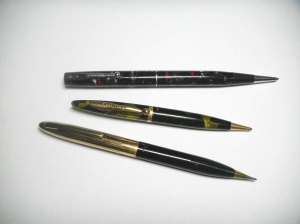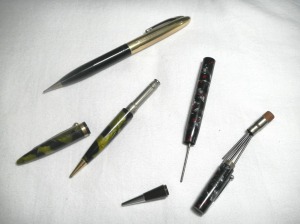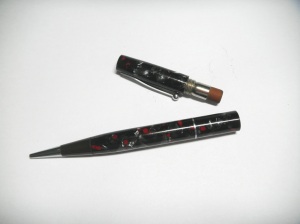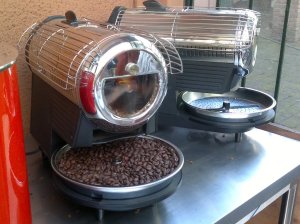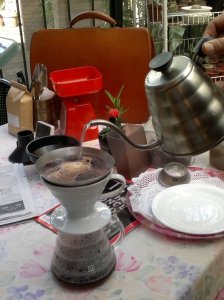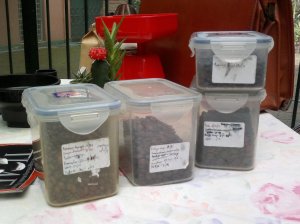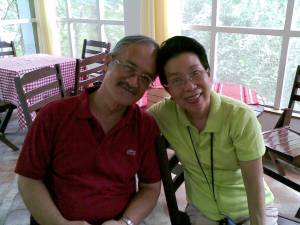Tuesday, March 12, 2013
Attractions of the Vintage Pencil
The other night I was cleaning a vintage fountain pen-and-pencil set that I wanted to sell. It was a 1930s Marine Green Sheaffer Balance mismatched pair - while the fountain pen was the standard length, the propelling pencil of the same pattern was shorter, sized for a vest pen. (I originally acquired them together, from the Fountain Pen Network Classifieds section a few years ago. Since then I was able to find a White Dot version in the same celluloid, so it was time to pass this pair on.)
I find that for some enthusiasts, the vintage pencil is an afterthought. Not many actually use the pencils as much as they would the fountain pens. Sellers sometimes break up sets in order to more easily sell the items. Maybe that's how my little vest pencil got orphaned, and later matched up with the wrong size pen. Some people, on the other hand, end up collecting vintage pencils for their beautiful celluloid (unblemished by latex sacs or staining ink).
Propelling pencils are writing tip-loading twist action pens. To expel old lead, you twist the pencil clockwise to push the lead upwards and out. Then you twist the other way until the metal pin that pushes the lead is fully retracted. You place the appropriate size lead in through the pen's nose cone and press the protruding tip onto the paper to make sure the lead is securely lodged. If you're not sure how to load your pencil, the blog Dave's Mechanical Pencils gives instructions, according to brand and era.
It was while learning how to refill the pencil that I realized it contained the wrong size lead. It was a 0.9mm lead that kept falling out. I cleaned out residue from the nose cone with a straight pin and tried some vintage Scripto 1.1mm lead that a friend gave me. It was a perfect fit! By the end of that exercise I realized I had fallen in love with the tiny pencil and just decided to keep it.
Richard Binder mentions that vintage Sheaffers and Parkers usually use 0.9mm leads, but not in this case. Pendemonium is another good source for vintage leads (the site navigation is not that intuitive, but go to Pen Repairs Supplies and select Pencil Leads). The most common sizes sold locally are 0.5mm and 0.7mm leads for modern mechanical pencils, but 0.9mm is available if you look for Japanese or Korean pencil brands (I use MonAmi).
I couldn't resist checking out the Waterman Ideal No. 3 propelling pencil that I received as a gift last January. I took it apart and discovered that the cap end unscrews to expose the eraser. I heard pencil lead rattling inside the eraser tube, so I pulled the eraser tube out and found a stash of short 1.1mm leads! The nose cone twists to propel the lead, but there wasn't much traction, so I lined the mechanism with a bit of latex and gently turned it with my pliers. I'll see later if a layer of dried shellac can thicken the diameter of the brass tube and provide traction for the nose cone (no, I'm not gluing them together). I'm not using the vintage eraser on this one - I have my favorite modern eraser (Staedtler Mars Plastic) for that.
For most daily use my 1940s Sheaffer Crest pencil with 0.9mm lead is pretty good. It's part of a set, too. I do have a couple of other modern plastic mechanical pencils, but right now they're not getting that much attention. The pretty vintage celluloid and the solid build appeal to me. It's not a collecting direction I'll be taking, but I sure do appreciate the fact that they're decades old and still work!
To learn more about vintage pencils, check out Jon Veley's The Leadhead's Pencil Blog. Jon Veley also wrote the book The Catalogue of American Mechanical Pencils and maintains The Mechanical Pencil Online Museum.
Posted by The Gravelcat at 9:56 PM 0 comments
Labels: Hobbies and Crafts, Mechanical Pencils, Vintage, Writing Instruments
Sunday, February 24, 2013
Coffee Safari
Today I went with friends on a coffee safari. No, we didn't hop from
one coffee shop to another! We were invited to a coffee-tasting at a
friend's home. The coffees, however, came from exotic locales - where
the best coffees grow.
I had no idea my friend Dante was a member of a local coffee club. As you can guess, he doesn't have coffee at coffee shops because he enjoys making his own at home. He has a collection of coffee gadgets, ranging from grinders, to roasters, to French presses and espresso machines! He buys international single-origin coffee beans from a trusted source, and only roasts 250g of beans at a time. He grinds his beans just before making his coffee, in order to take advantage of the beans' freshly-released flavor and aroma.
We had, in order: Peruvian, Ethiopian dry-process (where the coffee berries dry in the sun naturally, as opposed to wet-process where the berries are hulled and the beans are dried separately), Jamaican Blue Mountain, Panama La Esmeralda Gesha and Ethiopian Harar coffees. Plus an Ethiopian dry-process Americano (1:1 espresso and water).
Dante used the hand drip coffee method. I was wondering if the ceramic dripper was available locally, and found out it was being sold at Craft Coffee Workshop along Broadway Ave. in New Manila, Quezon City. It's also available in different sizes , along with other coffee accessories, on Amazon.com.
The coffees all had a wonderful aroma, each different from the other. The aroma of the ground coffee was much stronger than that of the whole roasted beans. I wish I had taken tasting notes, but I don't know the terms. Dante arranged the progression of flavors in terms of complexity and body. I guess it would be like how a sommelier arranges wines to complement a dinner. We tried each coffee black, then with some muscovado sugar, then with non-dairy creamer. All the coffees were very good, but the Jamaican Blue Mountain and Panama La Esmeralda Gesha were particularly delicious. Sublime. (Jude, to me: "So, did you hear the choir of angels yet?" With my mouth full of coffee, all I could do was nod and smile.)
Yes, we had a LOT of coffee, in small cups, not the big American-size mugs. We were served pan de sal (soft breakfast buns), with our choice of filling - butter, strawberry jam, peanut butter and Spanish-style sardines. We also had a lot of water on the side, to cleanse our palates. You would think that all that caffeine would render me into a quivering mess, but I checked my hands and they didn't shake. Dante explains that when coffee has been made properly, you get the flavor of the coffee without too much of the caffeine. To prove his point, he served me and Christine an Americano each, made of the Ethiopian dry-process beans. My sixth coffee, but in a tiny double espresso cup. I felt extraordinarily alert, but I felt great! No palpitations.
Of course, this isn't something I'd do on a daily basis. I don't think I'd ever get to experience that in a commercial coffee shop, or even in a hotel. It was such a treat (thank you so much, Dante)! I learned so much about coffee that I never knew before.
I like to support Philippine coffee bean producers. My usual coffee at home is Arabica from the Cordilleras or Liberica from Batangas ("barako"), so Dante suggested I try the local coffee brand Monks' Blend. It's produced by Benedictine monks from the Monastery of the Transfiguration in Malaybalay, Bukidnon. We have an active Philippine Coffee Board, so maybe one day I'll work my way through the different local coffees, which I see being sold in organic weekend markets, food trade fairs and sustainable lifestyle stores like Echo Store.
Posted by The Gravelcat at 5:42 PM 0 comments
Thursday, February 14, 2013
A Many-Splendored Thing
It was 1957. The acacia trees lining the avenues at the University of the Philippines campus in Diliman were not as tall and leafy as they are now. He saw her walking to class one day. She walked with a certain spring in her step, clutching her books. "Magarput" is his word. It's an Ilocano word that's hard to translate, but it connotes a certain kind of vivacious girliness. He kept an eye out for this "magarput" little Chinese girl from the sugar lands of the South, who mostly spoke English because she didn't know much Tagalog, the lingua franca of Manila. She graduated class salutatorian from Negros Occidental High School. In those days being an honors graduate automatically granted young students admission to UP Diliman.
She had no idea he was interested, until much later. He was a good-looking Northern boy from the summer capital, Baguio City, and he was in UP to study mining engineering. With other Ilocano boys he roomed at Narra Residence Hall and spent some of his free time with his fraternity brothers, or riding around in his friend's Volkswagen Beetle serenading young ladies at the nearby dormitories. She stayed at the YWCA dormitory across the street, where, every Sunday, they served the best fried chicken on campus. All the Narra boys dreamed of being invited to dine at the YWCA on Sundays!
My dad learned she was secretary of the youth organization at the UP Protestant Chapel, the Church of the Risen Lord. Naturally he joined, too. She had two other suitors, one of which became a top volcanologist, and the other, a prominent judge. But she only had eyes for my dad.
One fateful day he was returning to Narra Residence Hall from one of their dates, and came upon two fraternities fighting violently nearby. In the ensuing melee one boy stabbed him in the side! My mother brought him to the hospital, where she met my paternal grandmother for the very first time. When the boy who stabbed him found out that it was a case of mistaken identity, he was mortified. He apologized, and they later decided not to file charges against him. Oddly, a few years later, when my parents got married, he sent them a nice set of placemats.
My dad later joined an equipment firm, while my mom taught high school Biology at UP. They continued to see each other. On Valentine's Day in 1967 he went over to her faculty room and said, "Let's get married!" So off they went to Quezon City Hall. The two witnesses were my dad's best friend and the judge's secretary. They didn't have much money, so they went to Little Quiapo nearby and had a crushed ice dessert, halo-halo, to celebrate. It was many years later that my mother was finally able to introduce my father to her mother. My maternal grandma was fond of saying, "You know, I never met your father until after they got married, but he turned out to be my favorite son-in-law!"
Twenty-five years later they renewed their vows in church. They've been together 46 years now, best friends and lovers and parents. They are in their seventies. My dad jokes that their marriage has survived this long because he is deaf in one ear. My mom says it's because they each maintain their individual interests and yet support each other's pursuits.
But I think it's the romance, which is still quite strong. My friend Ana called me on the phone one night. The phone reception was very clear and she could hear everything going on in the living room, and even heard the doorbell ring. She heard the clattering of my mom's shoes on the marble. "Who's that? " she said. "It's my mom," I explained. "My dad just arrived." Suddenly it was quiet. "What's happening? Why is it quiet?" I laughed and said, "They're kissing!"
There are pink tulips in a little pot on the table tonight. It reminds me of the time he first gave her tulips many years ago. They were the exotic and fashionable imported flowers to give on Valentine's Day back then. We were all stuck in traffic on our way to their wedding anniversary dinner. After sniffing the tulips, she said with surprise, "But they don't smell of anything!" So he jumped out of the car and ran after a vendor selling sampaguita (jasmine) leis, and ran back. "Here!" he said, panting, giving my mother a lei. "Here's the scent!"
Ain't love grand.
Posted by The Gravelcat at 9:13 PM 0 comments
Labels: Anniversary, Family, Memory, Romance
Subscribe to:
Posts (Atom)
